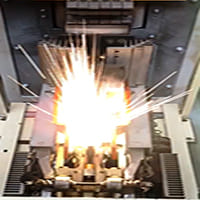COVID-19: Our guide to staying home and surviving the circuit breaker period
Feeling trapped within your four walls? Running out of activities to do? Get through the circuit breaker
pretty much in semi-lockdown – the government having introduced “circuit breaker” measures calling for everyone to stay home – your bedroom is now your office, delivery services are the mealtime norm, and social interactions are limited to online chats and gatherings.
Our day-to-day routines have certainly been turned on their heads, but fret not, there are several ways to entertain yourself and your loved ones at home, while keeping your mental health in check.
Staying home can put us in a gloomy mood. If you’re in need of some wellness tips, check out our list of podcasts for a healthier mind and body. The list includes podcasts with excellent fitness tips, nutrition advice as well as ways to improve your mental health.
Do you constantly feel sluggish? Find yourself constantly reaching out for that packet of chips? To keep your fitness in check, we put together a list of health apps to download on your phone. There are also wellness apps that help you to keep tabs on your diet, and control your alcohol intake.
Your regular gym and exercise studios have closed, but there are still ways to get your workout in while being confined within your four walls. We test drive some of the most challenging online workouts available on the Internet right now.

Selecting the Right Circuit Breaker and Its Type
A circuit breaker is a power system protection device that can make or break a circuit A circuit breaker operates under fault conditions and isolates the faulty part of the circuit from the rest of it by breaking the circuit. This operation is performed automatically by employing a relay along with the circuit breaker.
It should be noted that circuit breakers may also be manually operated and can also be operated under normal conditions. Hence circuit breakers are also useful switching devices that are used to make or break a circuit in normal conditions.
Working Mechanism:
In a general sense, a circuit breaker consists of two electrodes or contacts that under normal conditions remain in contact with each other allowing current to flow. But in case of a fault, the contacts open or become disconnected hence breaking the circuit and preventing the fault current from passing through.
The opening of contacts is achieved by energizing the tripping coil of the circuit breaker which causes the contacts to move as shown in the figure. It is also important to know that the tripping coil is energized by the relay, so basically it is the relay that signals to the circuit breaker to operate.
Arc Phenomena:
Whenever a short circuit fault occurs, an extremely high current passes through the contacts of the circuit breakers. When these contacts start to open, the area of contact decreases and the current intensity increases rapidly. This causes the surrounding material to heat up rapidly and ionize. This ionized medium thus acts as a path for current to flow delaying the breaking of the circuit path.

Types of Circuit Breaker Service Life and Number of Poles
Circuit breakers have an electrical life and a mechanical life:
The electrical life refers to the average number of times the circuit breaker can trip before failure.
The mechanical life refers to the average number of times the circuit breaker can be manually tripped before failure.
Number of Poles
Another characteristic shared by all product lines is that circuit breakers are available with a varying number of poles, according to the number of phase conductors in the protected circuit:
1-pole: Single phase
2-pole: Two-phase or single phase & neutral
3-pole: Three-phase or two-phase & neutral
4-pole: Three-phase & neutral
The purpose of using a circuit breaker with multiple poles is to make sure all lines are interrupted simultaneously. The use of single-pole circuit breakers for multiple-phase circuits is unacceptable, since only the line compromised by the fault will be cleared, and this can cause a second fault. For instance, a motor can be severely damaged if only one of the phases is disconnected: all three must be disconnected if there is a fault.
This article will provide an overview of the main types of circuit breakers, including their characteristics and applications.

Types of Circuit Breakers and their Applications
Circuit breakers have the basic function of providing electrical protection to equipment and circuits. There is, however, a wide range of circuit breakers available, including:
Miniature circuit breakers – DIN rail type
Miniature circuit breakers – Plug-in type
Molded-case circuit breakers
Motor protection circuit breakers
Motor circuit protectors
Hydraulic-magnetic circuit breakers
Each type of product is suited for different applications, but all of them share the basic function of interrupting dangerous currents which may cause damage to equipment or wiring, and which also represent a hazard for personnel. All types excluding the final two are based on thermal-magnetic protection, which has the following operating principle
Thermal protection interrupts slight over-current conditions, or overload. Circuit breakers have a carefully calibrated internal mechanism that expands in response to temperature, and it is calibrated such that it will interrupt electric current when the rated current of the breaker is exceeded. The reason why the thermal protection mechanism is designed with a slow response is to allow short duration over-current, which is a normal part operation in many types of equipment. Electric motors, for instance, may draw from 5 to 8 times rated current during startup, but only for an instant.
Magnetic protection interrupts fault currents, which have much higher magnitudes than overload and occur during line faults, short circuits, etc. As implied by its name, magnetic protection is based on induction- a coil inside the circuit breaker produces a very strong magnetic field when there is a fault current, and the internal contacts are immediately tripped. Since faults represent a high-risk condition and are never part of normal operation, they must be cleared immediately.
Breaking Capacity of Circuit Breaker
Breaking Capacity
With respect to magnetic protection, there are two key specifications that must be taken into account:
Service breaking capacity (Ics) – The largest current the circuit breaker can interrupt without suffering permanent damage.
Ultimate breaking capacity (Icu) – The maximum current the circuit breaker can interrupt, although it will suffer permanent damage if the value exceeds Ics. If a fault current exceeds Icu, the circuit breaker is not capable of interrupting it and the fault must be cleared by the main breaker, which has a higher breaking capacity by design.
For example, if a circuit breaker has an Ics of 10,000 Amperes and an Icu of 20,000 Amperes:
Any fault below 10kA will be cleared with no problem.
A fault between 10kA and 20kA will cause permanent damage when cleared.
Any current exceeding 20 kA can’t be cleared by this breaker.
Selection of breaking capacity greatly depends on the application at hand. For instance, the fault currents that can be expected in a small residential installation are of much lower magnitude than those found in the main switchboard of a large industrial facility.